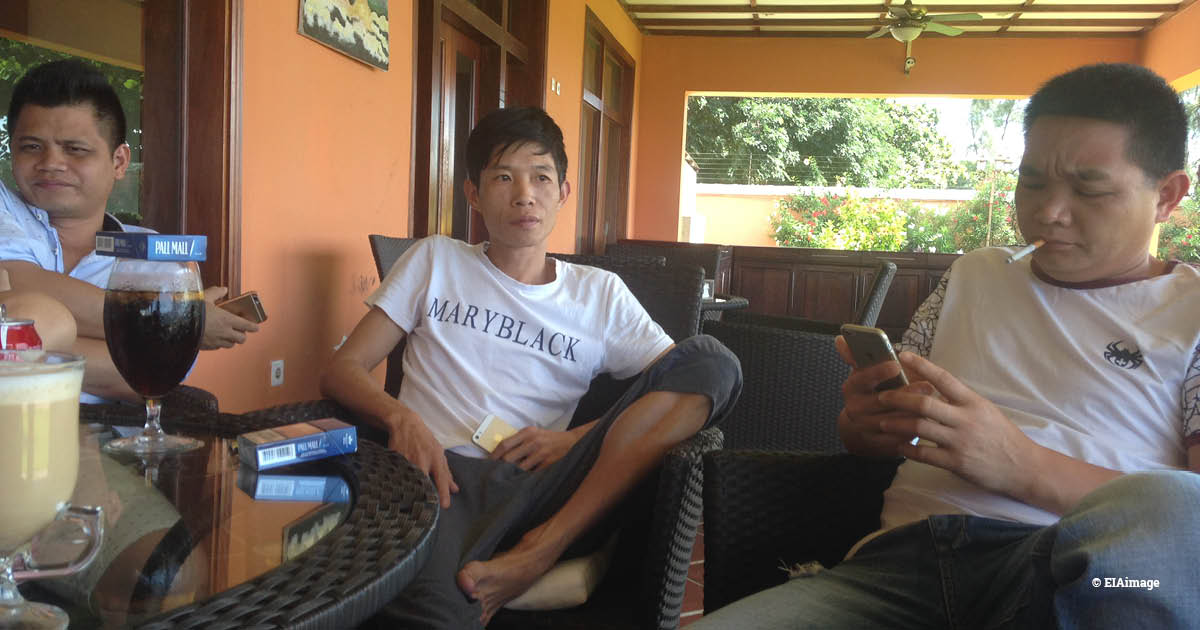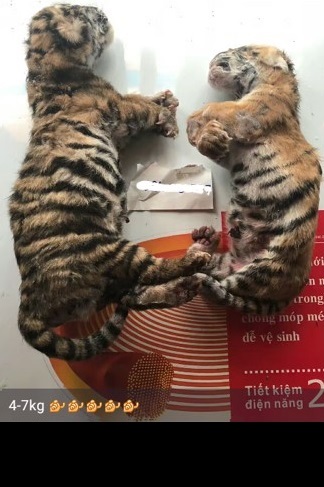Intelligence Week: Gathering key information from the front lines of undercover investigation



Following weeks, if not months, of preparation, EIA investigators are deployed to the field with the aim of engaging subjects of interest and obtaining valuable information on illicit trades and criminal networks.
Gathering information in the field can be a long and arduous process, especially in new places where we need to start with a clean slate. But, as with every investigation, it has to start somewhere – and every fragment of information we gather goes towards piecing together a grand, overall picture.
Contrary to what you may see in EIA’s public videos and films, where there is usually less than a minute of covert footage, field investigations often involve hours of secret filming. These conversations are not always straightforward, taking time, relationship-building and verbal ingenuity to lead subjects in a direction that results in the disclosure of how products are moved, information on upstream sources, specific routes and storage locations.
These engagements are protracted because of the sensitivities of the information we are after – questions can only be posed when the time is ripe. In one of the more memorable engagements, in Zanzibar in 2014, we were engaging with an ivory trafficker from Shuidong, in China. It took a full three days of relationship-building to gain enough confidence before the word ‘ivory’ was even briefly mentioned. Even so, it wasn’t until the fourth day that the trader began opening up.

Undercover filming during a meeting with the three ivory traffickers identified by EIA’s investigations in 2016 as the heads of the ‘Shuidong syndicate’ (c) EIAimage
When traders do open up, investigators have to tread carefully because margins of error between ‘information flow’ and ‘alarm bells ringing’ are slim. For example, if you pursue certain angles too aggressively, the subject may wonder why you are asking so many questions when you are supposed to know the business; at the same time, you have to share enough insider ‘know-how’ to convince them that you are a genuine trader to keep them interested.
For a successful engagement, it is key that investigators get subjects to divulge their trade secrets without questioning their motives. Failure to strike this balance might lead to unwanted suspicion.
Such occasions have occurred. One time, in Beira, Mozambique, in 2016, suspected ivory traffickers were adamant that EIA investigators were journalists within five minutes into an engagement. We had to diffuse the situation and retreat to safety in what could have been a major and dangerous security situation.
A variety of factors can trigger such moments, such as approaching a subject too aggressively or a slip of the tongue. There may be technical problems with the equipment surreptitiously used to capture encounters, thereby drawing unwanted attention – in the past, an unexpected noise on a concealed recording device could give the game away, as could light reflecting off a concealed miniature lens. Fortunately, high quality pictures and sound can be obtained these days using all sorts of ingeniously adapted, everyday objects without raising suspicion.
In the end, success, depends on the innate skills of the investigator and keeping one’s nerve. Most of the time, investigators are able to carry out their fieldwork without many such unwanted incidents. The information gathered in these investigations is rigorously cross-checked and corroborated by multiple sources for its accuracies – sometimes there are red herrings and it is vital to verify and eliminate those to avoid false leads.

Dead tiger cubs for sale – illegal wildlife trade is increasingly taking place on social media, another source of intelligence for our investigators
At this stage, the relationship between investigators and the intelligence team is vital – allowing for the development, corroboration and dissemination of valuable intelligence. For instance, an investigator may collect information on a person of interest and share that source with a member of the Intelligence Team – the team can then build on that front line work and map out a suspect’s location and network using open source intelligence techniques.
The Intelligence Team and investigators use a variety of tools to assist their work. The way investigations are conducted today, compared to when EIA started back in 1984, is significantly different. With the upsurge in use of social media around the world, coupled with extensive news and current happenings all at our fingertips, the techniques for investigating environmental crime have evolved beyond our wildest imagination – and continue to do so.
While it is vital is that investigators stay on top of ongoing trends and explore novel research avenues; however, one thing can never be replaced – witnessing products first-hand.
Hopefully, the coronavirus pandemic will subside soon and we can get back on the road again and into the field to catch smugglers in the act.